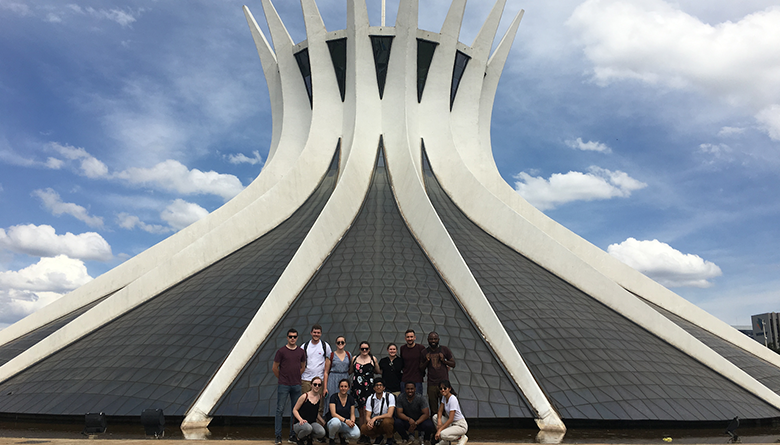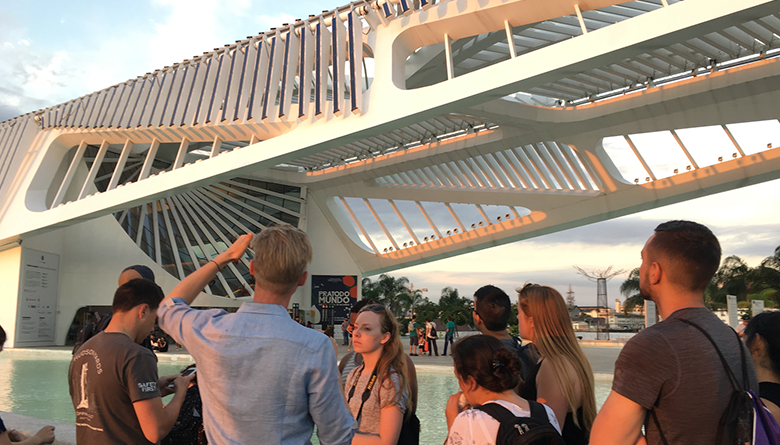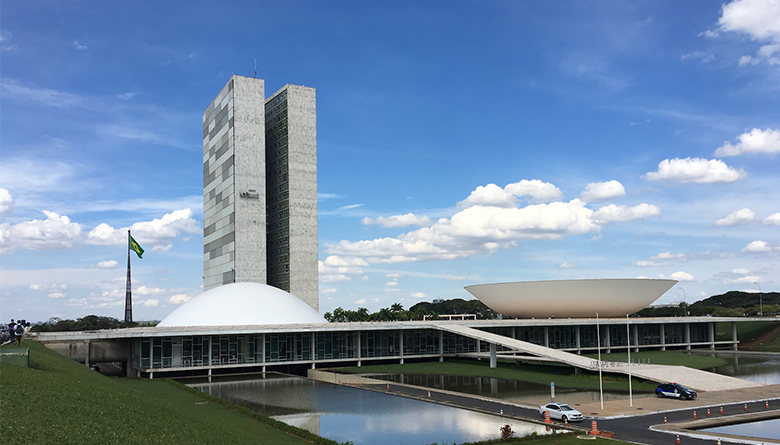By Daniel Corridan ’19, Civil Engineering
This year, I was afforded the opportunity to travel to Brazil as part of a group containing six architecture students, six civil engineering students, and two faculty members. We had just completed the Bedford Program at Rensselaer Polytechnic Institute, during which we spent two semesters working alongside one another to develop integrated designs for innovative structures.
While architects and engineers are expected to collaborate and work together effectively in industry, this relationship isn’t always cultivated during college. Completing the Bedford courses at RPI allowed us to do this and was both challenging and exciting. The experience pushed me out of my comfort zone and forced me to consider the built environment from an architectural perspective, contrary to my engineering background. The need for collaboration between architects and engineers is something that was emphasized during the program’s coursework and then further highlighted when we traveled to Brazil to meet with various designers.
Jetting off to Brazil was an amazing experience. While there, the theme of integrated design was further demonstrated as we visited several structures to observe them in their native setting. We visited the National Cathedral, located in the capital city of Brasilia, which was designed by legendary Brazilian architect Oscar Niemeyer, in addition to the Museum of Tomorrow in Rio de Janeiro, designed by Santiago Calatrava, who received an honorary degree from RPI in 2006. Both designers had great fundamental understandings of both engineering and architectural principles and clearly expressed them in the final form of their structures. For these structures in particular, it was important that the projects’ architects had a thorough understanding of engineering, and that they worked closely with a structural engineer, because this allowed them to push the envelope and deliver breathtaking structures with longer spans, larger cantilevers, and other impressive features.
In addition to visiting numerous notable structures, we also had the privilege to meet with many local design firms as well as the regional offices of global firms. Through these visits we were able to hear about the design process associated with some of the structures we visited and get a sneak peek at upcoming projects. All of the professionals we met with offered unique perspectives on why engineers and architects should understand each other’s craft, and stressed the importance of communicating effectively across disciplines in order to produce a better finished product. While we learned about some of the obvious benefits of early collaboration, such as the reduction of time spent resolving conflicts, we also learned about some that are less apparent. For instance, if architects and engineers work together early enough in the design process, they can work to create an efficient design that optimizes material use and decreases the amount of raw construction materials required for a project. Such collaboration can also lead to more constructable designs, meaning that the structure can be designed so that it costs less to build. When architects and engineers work together, they can design much more efficiently and sustainably, without sacrificing beauty.
Visiting Brazil and learning about its key structures provided valuable insight into its architectural history. It was fascinating to learn about the motivation for the development of Brazil’s monumental structures and the design processes that led to those structures. I learned that engineering and architecture can coexist elegantly if both are considered early on in the design process. The experience is something that I will carry with me throughout my design career.



